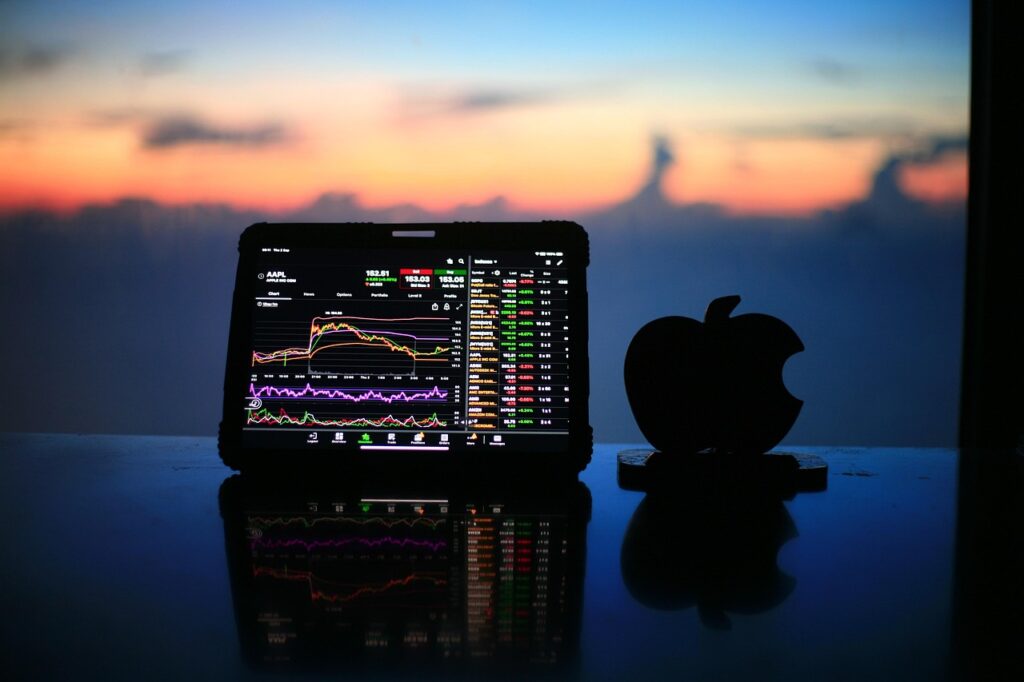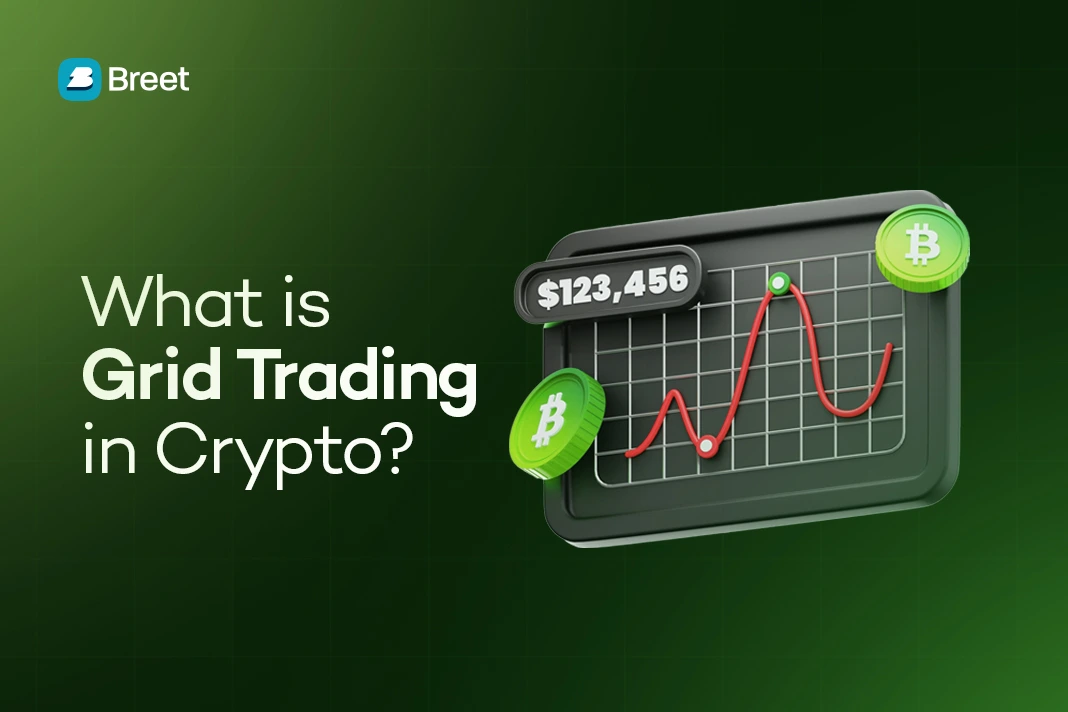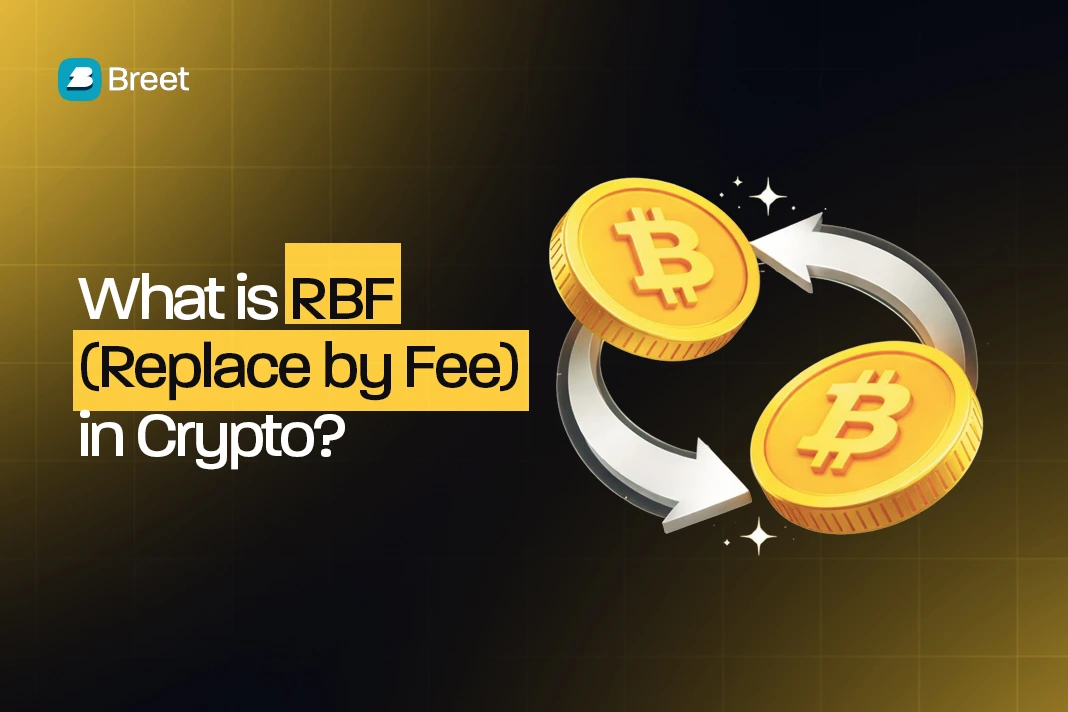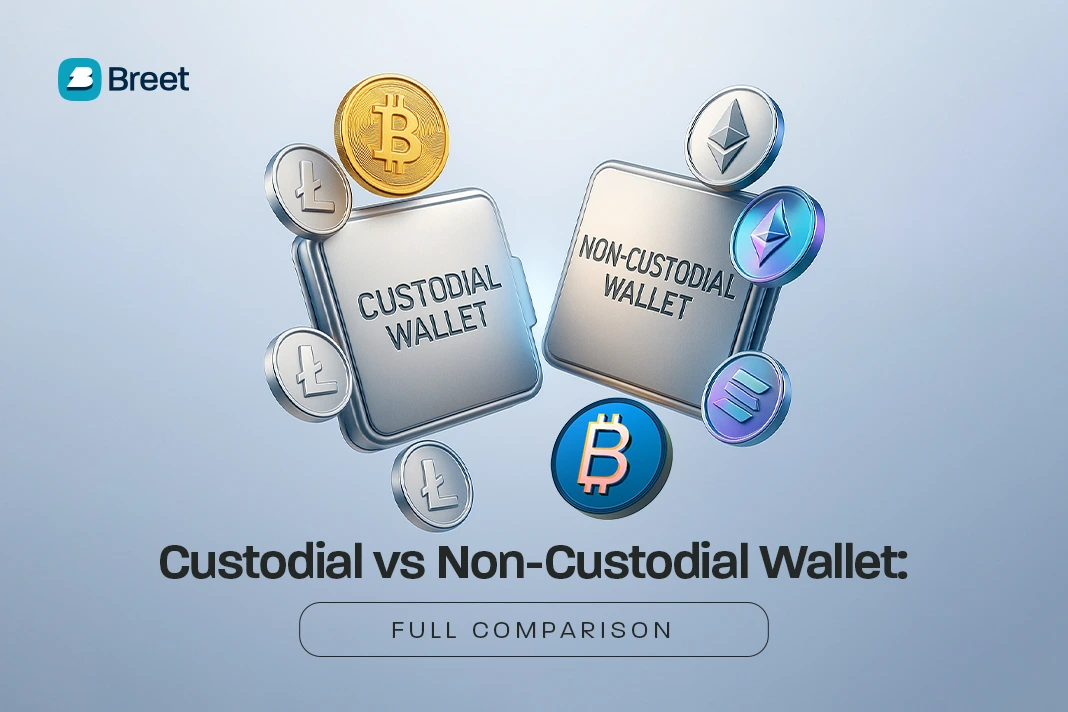The crypto market never sleeps and neither do its price movements.
Therefore, if you want to succeed in trading, understanding crypto trading charts is one of the most important skills to learn.
It doesn’t matter if you are a beginner or an expert, chart reading helps you make smarter and profitable trading decisions.
This guide breaks down how to easily read crypto trading charts.
Do you trade Bitcoin (BTC), Ethereum (ETH), or any altcoin, the insights here will help you read crypto trading charts with confidence and accuracy.
What Are Crypto Trading Charts?

Crypto trading charts are visual tools that show how the price of a cryptocurrency has moved over a specific time.
These charts give you a picture of market trends, showing whether prices are going up, down, or staying flat.
Most trading platforms offer crypto charts to help users track asset performance, make price predictions, and analyze entry or exit points.
Notably, the data displayed on crypto trading charts is based on historical prices and volumes and can be adjusted to show changes within minutes, hours, days, weeks, months or years.
Related:
- Why is Bitcoin Fee So High? & How to Lower It
Why Learning to Read Crypto Trading Charts Matters
Understanding how to read crypto trading charts is one of the most important skills for anyone involved in cryptocurrency trading. Be you a beginner or an experienced trader, charts help you make smarter and more confident decisions.
Here’s why this skill is so valuable:
1. Makes you a smarter trader
Crypto trading charts show how the price of a coin moves over time. In essence, learning to read crypto trading charts helps you gain insight into where the market has been, where it might be going and when to enter or exit trades.
Charts also reveal trends, patterns, and key price levels that help you avoid guessing and start trading based on data.
For example, spotting a “double bottom” pattern could signal a potential price rebound. Instead of reacting emotionally, you make decisions based on a visual history of the market.
2. Helps you time your trades
Timing is everything in crypto trading and investing because prices can rise or fall within minutes.
Therefore, learning how to read crypto trading charts can help you identify support and resistance zones; breakouts and breakdowns as well as market entry and exit points.
This allows you to buy when prices are low and sell when they are high or short when a drop is likely.
3. Reduces emotional trading
When you do not know how to read crypto trading charts, you are more likely to rely on emotions or social media hype.
This leads to poor decisions and costly mistakes. Notably, charts provide objective data that reduces panic and fear.
For example, instead of panic-selling during a dip, reading crypto trading charts might show it is only a small correction in a larger uptrend.
4. Benefits both beginners and expert traders
While beginners can use basic chart indicators to learn market movements and build confidence, experienced traders rely on advanced patterns and tools to fine-tune their strategies.
Moreover, charts are the foundation of every successful trader’s toolkit, regardless of experience level.
5. Reflects overall market psychology
Crypto trading charts do not show price only; they show how traders are thinking and feeling.
Every candlestick represents the battle between buyers and sellers. Therefore, learning how to read crypto trading charts is like learning to read the emotions and reactions of the market.
For example, a long red candle may indicate panic selling, while a rising series of green candles could show growing confidence.
Top Pick:
- The Best 11 Play to Earn Crypto Games
Types of Crypto Trading Charts Explained
Different types of charts offer different perspectives. Here are the most common:
- Line Charts: These are the simplest charts. They connect closing prices over time with a line. While line charts are best for beginners given that they are clean and easy to understand, they do not show full price action (like highs and lows).
- Candlestick Charts: These are the most popular chart types in crypto trading. Each “candle” shows the open, high, low, and close price for a selected time period. While candlestick charts can be confusing at first glance, they show a full view of price movement and market trend.
- Bar Charts: They are similar to candlesticks but represented as vertical lines with horizontal ticks showing open and close prices. They are less visually intuitive but compact and detailed.
- Heikin-Ashi Charts: These are modified candlesticks that smooth out price action for better trend spotting. They are better at showing clear trends but do not show exact prices.
What are the Key Elements of a Crypto Trading Chart?

Crypto trading charts are the foundation of technical analysis.
They provide a visual representation of price behaviour, trends, and momentum in the market.
Understanding these chart elements is critical for making smart decisions and minimizing risk.
1. Price
The vertical axis on the right (or left) side of the chart displays the price of the crypto asset. It updates in real-time, allowing traders to track price fluctuations over time.
Why does it matter? It helps you gauge the cryptocurrency’s value at any given time and compare it with historical highs and lows. You can also use it to set stop-loss and take-profit levels based on past support and resistance zones.
2. Timeframes
Understanding the context of price movement is impossible without knowing the time period.
Accordingly, the horizontal axis of a crypto trading chart shows the time frame selected, ranging from 1 minute (1m) to 1 yeae (1M) or more.
Notably, shorter timeframes (1m, 5m, 15m) are ideal for scalpers and day traders. Whereas longer timeframes (4h, 1D, 1W, 1M, etc too bZ) are used by swing traders and investors for trend analysis.
3. Candlesticks
Candlesticks are the most common way price data is displayed in crypto trading charts.
Each candlestick represents the price action for a selected timeframe (e.g., one candle for every 15 minutes or 1 day).
Candlestick patterns are important because they help traders anticipate reversals or continuation of trends.
Each candlestick shows the following:
- Open: Price of a cryptocurrency at the beginning of the period
- Close: Price of a crypto asset at the end of the period
- High: The highest price reached within a particular period
- Low: The lowest price reached within a particular period
Notably, green or white candlesticks signify bullish market sentiments while red or black candlesticks signify bearish market sentiments.
Additionally, the close price of green or white candlesticks is usually higher than the open price.
Meanwhile, the closing price in red or black candlesticks is usually lower than the opening price.
4. Volume Bars
Located at the bottom of most charts, volume bars indicate how much of the asset was traded during each candle’s time frame. Volume bars are classified mainly into two l, namely: tall and low bars.
While tall bars indicate high activity such as strong buying or selling interest, low bars represent low activity, often suggesting indecision or market rest.
Why does volume bars matter in reading crypto trading charts?
It is because volume confirms the strength of price movements. For instance , a price breakout with low volume is weak and unreliable.
5. Technical Indicators (Momentum, Trend, and Volume-based Tools)
Technical indicators are mathematical calculations applied to price, volume, or open interest data.
They help traders interpret market data more objectively. There are different types of indicators based on function, including momentum, trend, and volume-based indicators.
Momentum indicators such as Relative Strength Index (RSI) and stochastic oscillator measure the speed and strength of a price move. Momentum indicators also help predict reversals and warn of price exhaustion.
Trend indicators, on the other hand, help traders identify the direction and strength of a trend.
I’m reading crypto trading charts, trend indicators help you help stay in profitable trades and avoid entering against the trend.
Examples include Moving Average (MA), Simple Moving Average (SMA), Exponential Moving Average (EMA) and Moving Average Convergence Divergence (MACD).
Volume-based indicators are another important component to pay attention to when reading crypto trading charts.
Why? The reason is that these indicators give insight into the strength of a price movement by analyzing trading volume.
These indicators also validate breakouts or reversals. Examples include On-balance volume (OBV), volume moving average, and accumulation/distribution line.
The On-Balance Volume (OBV) combines price and volume to show buying and selling pressure. Whereas, the volume moving average is a moving average applied to volume bars. Meanwhile, the accumulation and distribution line measures the cumulative flow of money into or out of a crypto asset
6. Order Book and Trade Feed
Though not part of the chart itself, some trading platforms display the order book which refers to the real-time list of buy and sell orders at specific price levels.
They also display the trade feed which shows the list of recent transactions (volume, price and time).
These components are particularly useful for scalpers and day traders to assess immediate buying and selling pressure.
For You:
- The Best 9 USDT Trading Platforms, Ranked
Key Components of Crypto Trading Charts
| Component | Purpose and Benefits |
|---|---|
| Price | Tracks value changes and helps identify price levels |
| Time | Shows when price changes occurred (timeframes) |
| Candlesticks | Visualizes price movement, trend direction, and market sentiment |
| Volume bars | Measures buying/selling activity; confirms strength of moves |
| Trend lines | Defines support/resistance and trend direction |
| Technical indicators | Adds deeper analysis to price action (momentum, trend, volume confirmation) |
| Chart patterns | Helps anticipate price reversals or continuations |
| Order book/Trade feed | Provides real-time insights into current market pressure |
What Are Crypto Chart Patterns? Types and Examples Explained
Crypto chart patterns are visual formations on price charts that signal potential future movements based on past behavior.
Crypto traders use them to anticipate market direction, identify trends, and plan entry or exit points. Generally, crypto chart patterns fall into three categories, namely: continuation, reversal, and bilateral.
Continuation patterns suggest the existing trend will continue. Common ones include flags, pennants, and triangles. For example, a bullish flag in an uptrend signals that the price is likely to rise further after a brief consolidation.
Reversal patterns indicate that a trend may be about to change.
Key examples are the head and shoulders (bearish reversal), inverse head and shoulders (bullish reversal), double tops, and double bottoms. Spotting these can help traders act before a major shift occurs.
Bilateral patterns, like symmetrical triangles, suggest the price could break out in either direction, requiring confirmation before action.
These patterns are most powerful when combined with technical indicators like volume, MACD or RSI. Notably, no pattern guarantees outcomes, but understanding them helps traders make calculated decisions.
Related:
- 8 Most Popular Litecoin Faucets to Earn Free LTC
10 Basic Technical Indicators Beginners Should Know

For beginners in crypto trading, understanding basic technical indicators can help you read crypto trading charts.
These tools help you to analyze price trends, momentum, and potential market reversals.
1. Moving Averages (MA)
This smooths out price data to identify trends over time.
The two main types are Simple Moving Average (SMA) and Exponential Moving Average (EMA). MAs help traders determine support and resistance levels as well as trend direction.
2. Relative Strength Index (RSI)
RSI measures the strength of price movements on a scale of 0 to 100.
A crypto asset is considered overbought when RSI is above 70 and oversold below 30, helping identify potential reversals.
3. Moving Average Convergence Divergence (MACD)
This momentum indicator shows the relationship between two EMAs.
When the MACD line crosses above the signal line, it suggests a possible buy signal; crossing below may indicate a sell.
4. Bollinger Bands (BB)
These are volatility bands placed above and below a moving average. When price moves outside the bands, it may signal overbought or oversold conditions.
5. Trading volume
Trading volume shows how much of a crypto asset is being traded.
A price move with high volume indicates stronger market interest while a price movement with low volume may suggest declining bullish interest.
6. Support and Resistance Levels
Support is a price level where a crypto asset tends to stop falling due to increased buying interest, while resistance is where it tends to stop rising due to selling pressure.
These levels are like psychological barriers in the market. Traders use them to predict where price movements might pause or reverse.
For instance, if Bitcoin repeatedly drops to $25,000 but never falls below it, that level becomes strong support.
Likewise, if Ethereum (ETH) repeatedly fails to surpass $3,000, that level becomes a strong resistance. Identifying these zones helps you make better entry and exit decisions and place stop-loss orders more effectively.
7. Stochastic Oscillator
This momentum indicator compares a cryptocurrency’s closing price to its price range over a specific period, typically 14 days. It consists of two lines, including the %K line and the %D line.
When these lines rise above 80, the asset is considered overbought; below 20, it’s oversold. Crossovers between the lines can signal buying or selling opportunities. For example, if the %K line crosses below the %D line in the overbought region, it could signal a potential downward reversal.
8. Fibonacci Retracement
Based on the famous Fibonacci sequence, this tool helps identify potential reversal levels by plotting horizontal lines at key percentages (23.6%, 38.2%, 50%, 61.8%, and 78.6%) between a high and a low.
These levels often align with areas where prices temporarily pause or reverse.
Traders use Fibonacci retracements to find entry points during pullbacks in a trending market. For example, in an uptrend, a price that retraces to the 61.8% level before bouncing back could present a buying opportunity.
9. Average True Range (ATR)
ATR measures market volatility by analyzing the average range between high and low prices over a certain period, typically 14 days.
It doesn’t indicate price direction but shows how much the price typically moves.
A high ATR suggests a more volatile market, while a low ATR indicates stability.
Notably, crypto traders use ATR to set stop-loss levels that adapt to changing market conditions. In a highly volatile market, setting a wider stop-loss using ATR can prevent premature exits.
10. Trendlines
Trendlines are straight lines drawn on a chart to connect key highs or lows.
An upward trendline connects a series of higher lows, indicating an uptrend, while a downward trendline connects lower highs, showing a downtrend.
Moreover, trendlines help visualize the direction and strength of a trend and can also act as support or resistance. When price breaks through a well-established trendline, it may signal a potential trend reversal or breakout.
A good understanding of these and many more technical indicators can help beginners read crypto trading charts accurately. It can also help you to develop a solid foundation for technical analysis.
Tips on How to Read Crypto Trading Charts with Confidence
Learning to read charts takes practice. Here’s how to get comfortable:
- Start with longer timeframes before zooming in
- Look for patterns and not just price points
- Avoid using too many indicators; Keep it simple
- Use demo accounts or paper trading tools to practice
- Follow the trend: Don’t trade against market direction
Don’t Miss:
- 10 Best BTC Accelerators
Frequently Asked Questions on How to Read Crypto Trading Charts
- What’s the best chart type for beginners?
For beginners, line and candlestick charts are the easiest to start with. Line charts show a simple view of price trends over time. Meanwhile, candlestick charts offer more detailed information, such as opening, closing, high, and low prices within a time period.
- How can I tell if a coin will go up or down?
No chart can predict the future with certainty, but technical indicators can help you analyze market trends and make calculated guesses. For instance, RSI shows if a coin is overbought or oversold while MACD helps you spot trend direction and momentum.
- What’s the best timeframe to trade crypto?
The best timeframe would depend on your trading style. While scalpers and day traders often use short timeframes to catch quick moves, swing traders or long-term investors prefer longer timeframes to track market trends. Therefore, pick a timeframe that matches your schedule and strategy.
- Do I need paid tools to read charts?
No. There are excellent free charting tools available such as TradingView and several crypto trading platforms. These platforms let you read charts, add indicators, draw trendlines, and much more without needing to pay.
- How do I read crypto charts for day trading?
For day trading, you can combine short timeframes with indicators (like RSI, MACD, moving averages etc.), candlestick patterns and trading volume to analyze price direction.
Conclusion
Reading crypto trading charts is a must-have skill for anyone serious about crypto trading. It helps you understand price movements, spot trends, and make smarter decisions.
However, learning how to read crypto trading charts is not about guessing the market.
Rather it is all about understanding what the market is doing at a given period and which direction it might go next.
When you can interpret price action, volume, and technical indicators, you would be better positioned to make calculated decisions rather than emotional ones.








